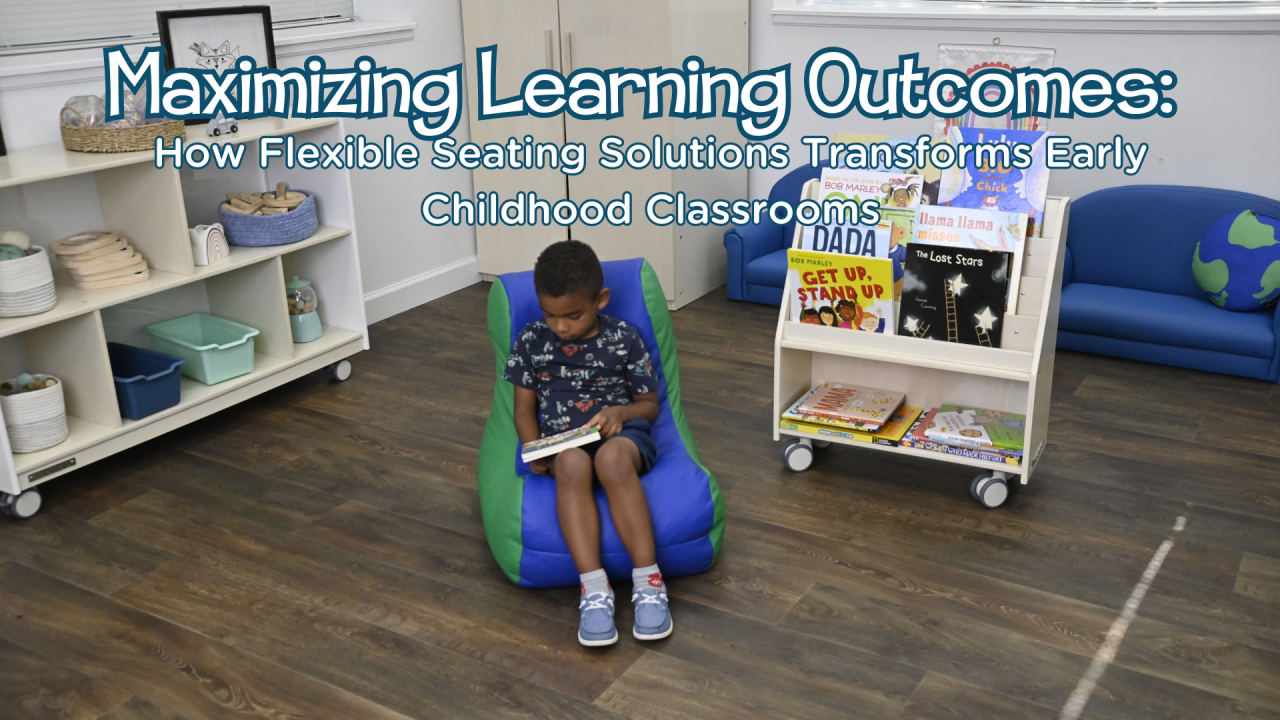
Maximizing Learning Outcomes: How Flexible Seating Solutions Transform Early Childhood Classrooms
In today’s dynamic educational landscape, early childhood classrooms are evolving to meet the diverse needs of young learners. One of the most significant shifts in recent years is the adoption of flexible seating solutions, which have become a cornerstone of modern classroom design. Flexible seating not only fosters an engaging and inclusive learning environment but also plays a crucial role in supporting different learning styles, encouraging collaboration, and helping manage classroom behavior.
Supporting Different Learning Styles
Every child learns differently, and traditional classroom setups with rigid desks and chairs may not cater to the varied needs of young learners. Flexible seating solutions, such as soft seating, wobble stools, and floor cushions, offer children the freedom to choose how they learn best. For example, some children may prefer sitting on a comfortable beanbag while reading, while others might concentrate better when seated on a stability ball that allows them to wiggle and move.
This variety in seating options helps cater to the different sensory and motor needs of young children, ensuring that each child can engage with the material in a way that suits them. By providing choices, educators can create a more inclusive environment where all students have the opportunity to thrive.
Encouraging Collaboration and Social Interaction
Flexible seating arrangements naturally lend themselves to collaborative learning. Traditional rows of desks can create barriers to communication, but flexible seating allows for more fluid and dynamic groupings. Whether it’s a small group discussion or a partner activity, children can easily move their seating to form circles or clusters, fostering an atmosphere of teamwork and shared learning.
Products like modular seating or low tables designed for group work are excellent additions to any early childhood classroom. These solutions encourage children to work together, share ideas, and develop important social skills. As children interact with their peers in these collaborative settings, they learn to listen, communicate, and respect different perspectives, all of which are vital skills for their future academic and personal success.
Managing Classroom Behavior
One of the often-overlooked benefits of flexible seating is its impact on classroom behavior. Traditional seating can sometimes contribute to restlessness and disengagement, particularly in young children who need to move frequently. Flexible seating allows children to choose seating that meets their comfort and movement needs, which can lead to better focus and fewer disruptions.
For instance, providing options like wobble chairs or standing desks can help children who have difficulty sitting still for long periods. When children are comfortable and engaged, they are less likely to exhibit disruptive behaviors, making the classroom environment more conducive to learning for everyone.
Integrating Flexible Seating into Any Classroom
Integrating flexible seating into your classroom doesn’t have to be a daunting task. Start small by introducing a few alternative seating options and gradually expand as you observe how your students respond. Products like soft play seating, sensory cushions, and versatile room dividers can be seamlessly integrated into any classroom layout, allowing for flexibility without compromising on space or function.
Children’s Factory offers a range of flexible seating solutions that are perfect for early childhood classrooms. From soft seating sets that create cozy reading nooks to durable tables and chairs that can be easily rearranged for different activities, these products are designed with young learners in mind. Incorporating these options into your classroom can transform it into a vibrant, adaptable space that meets the needs of all students.
Conclusion
Flexible seating is more than just a trend; it’s a powerful tool that can transform the early childhood classroom into a more inclusive, engaging, and effective learning environment. By supporting different learning styles, encouraging collaboration, and helping manage classroom behavior, flexible seating solutions play a pivotal role in maximizing learning outcomes for young children. As educators continue to explore innovative ways to enhance the classroom experience, flexible seating will undoubtedly remain at the forefront of educational design.